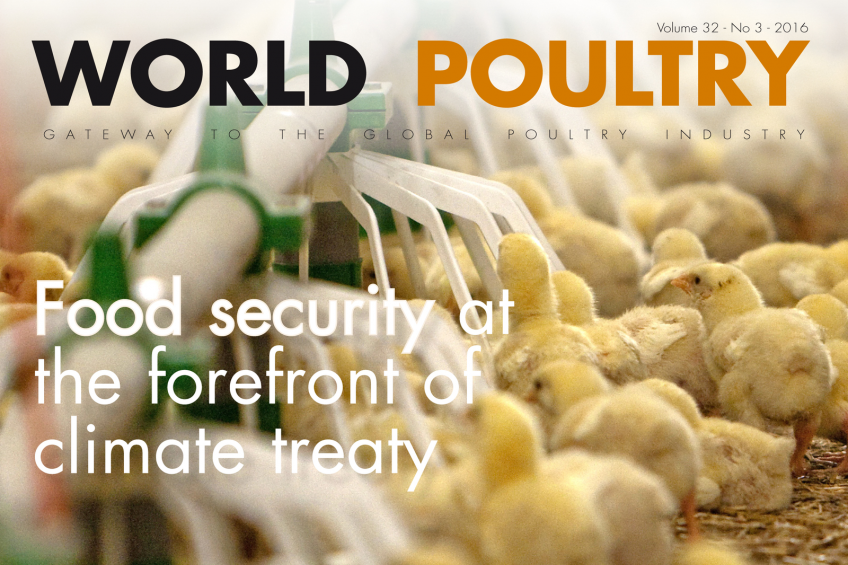3rd edition of World Poultry 2016 now online

In this edition we look back at the Paris climate treaty which was negotiated in the last month of last year. Great news, so it would seem for food producers from around the world.
The treaty normally focusses on the reduction of CO2 and other polluting agents alone, but this year around, there is a special paragraph on food production. Battling hunger is at centre stage, even if that has negative consequences for CO2 production.
Furthermore World Poultry visited a layer farm in Abu Dhabi. In the middle of the desert Bin Hamoodah farm grew in a couple of years from a mediocre farm to a state of the art layer operation of 600,000 birds. Their focus is on efficient production, growth and innovation.
Looking at innovation, the future of poultry production surely will have more automatisation and robotisation. At Wageningen University researcher Bastiaan Vroegindeweij experiments with a robotic floor egg collector. In the interview of this edition of World Poultry he explains what the possible future of this concept will be.
Also we focus on the research done into Campylobacter. Reducing this bug in the poultry house is key to preventing further cross contamination in the supply chain.

For these and much more see our online editions.





















